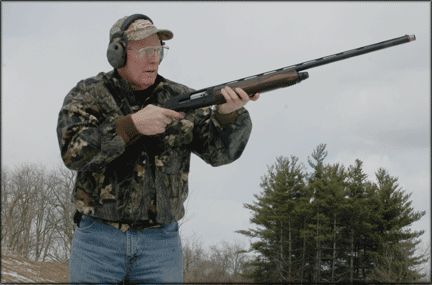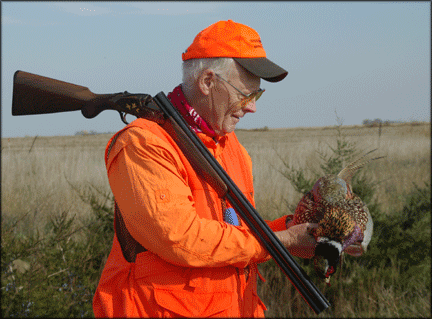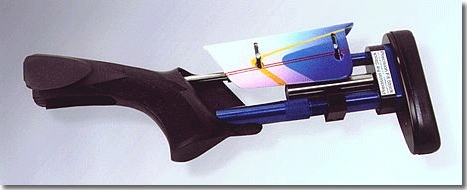You probably already have some preconceived notions about your dream shotgun, and that is just fine. But sometimes it pays to seek advice from someone who has had literally hundreds of shotguns pass through their hands, had so many different stocks touch their cheek, fondled so many receivers. Lucky for me, I am one of those folks, so hopefully what I’m going to tell you might help with your future purchase.
What is the most important quality to seek in your next shotgun? A beautiful piece of walnut, out of this world engraving, strength to hold up to a million rounds, a stock that fits you perfectly? Or what? To me all these factors are important, as are others, but I think the best quality a shotgun can have is feel. That’s what to look for first.
It’s difficult to describe feel, just as it’s difficult to describe love at first sight. You just know both when you feel either. Once you love how a shotgun feels you are going to thoroughly enjoy it. You are going to have great confidence in it. After that you can always add such luxuries as a custom stock, custom engraving, custom checkering, whatever. But if you don’t start out loving the feel of a shotgun the cards are stacked against you ever shooting that gun all that well.

Berettas seem to be great feeling semi-autos to most shotgunners – from the 303 to the 390 – to this 391.
When it comes to semi-autos I think Beretta attained the feel I’m talking about with the models 303, the 390, and now the many versions of the 391. I don’t think it’s easy to incorporate a good-feeling quality into a semi, but I do believe Beretta has done it. It’s more than balance I’m talking about, but good balance is certainly a big part of having a shotgun feel right. A shotgun with great feel should move almost effortlessly to the target – pitch or feathered. Such a shotgun will probably let you think it actually weighs less than it really does. You should look forward to picking up and fondling such a shotgun every chance you get.
Have you ever picked up a Perazzi? If you have not done so I urge you to do that – do it even if you cannot afford one. There’s something about virtually every Perazzi I pick up that just sings feel. From the initial pick up to the shouldering to the mounting to the swinging, even to the sound of a Perazzi clicking shut – for many it is a love affair at first sight or first feel. This seems to be true no matter the barrel length for this company has a way of matching barrel weights to the receiver, stock and fore-end so that balance and feel are not compromised. To experience feel first hand just pick up and handle a Perazzi intended for field shooting – or one of their sporting clays models.
The English got feel right over 100 years ago – with their side by side shotguns, first with hammer guns, but later with sidelocks and then even boxlocks. Not many of us are going to have the opportunity to pick up, fondle and swing a Purdey or a Boss, but maybe one day you will have a chance to do this with one of the lesser known old English doubles – perhaps an Army & Navy, a Webley Scott (this company made many fine English double guns sold in other names), a Cogswell & Harrison, a Reilly or one from a number of other English makers that don’t bring the prices of a Purdey, a Holland or several others. If you ever get the chance to handle a gun like this you will see what I mean by feel.
Enough about feel – let’s move to fit. Whatever new gun you buy – it probably won’t fit you perfectly. However, this does not mean you have to change the beautiful stock the gun came with – at least hopefully not. Length of pull can be adjusted with a thicker or thinner recoil pad. If the comb is too high you or a stock person can sand away until that portion of the fit is correct, and then minimal refinishing could be all you need to fix the looks of the walnut.
You could also have the stock you buy made into an adjustable comb stock – or it may come with one. These are sort of ugly but not double ugly. You could add self-adhesive Moleskin (available at drugstores) to the comb if the stock is too low – sort of double ugly but serviceable.
The best way to determine gun fit is to have a pattern paper or steel plate to shoot at. The premise should be to shoot over and over – say at least five times – at the same pointing spot on the paper or the steel plate. Is your new gun shooting high, low, left, right or some combination of two of those? No aiming for this work. Just pull the gun up and shoot.

Caesar Guerini over and unders tend to have great feel in the opinion of numerous shooters.
Don’t overlook the recoil pad. Sad to say some recoil pads put on factory shotguns these days are abominable. This is not to say such pads don’t have recoil-absorbing qualities. That’s not what I’m getting at here. A recoil pad should be a significant aid in helping with a perfect gun mount. Too many pads are a significant handicap in allowing the shooter to make a great gun mount. With some pads the consistency is simply too sticky. Those that are cause a lot of gun mounting problems. Another problem is caused by sharp pad edges, especially at the top of the pad. Consider the type of pad that has a plastic insert at the top – a feature that can be a big factor in reducing gun mounting hang ups. Further, rounded edges all around the pad help guard against sharp edges gouging into the shoulder area. The recoil pad is perhaps the most overlooked aspect of new or used shotgun buying. Of course, the buyer can always add the recoil pad of his or her choice after purchase.
For hunting, as opposed to competition shooting, I actually like most shotguns fitted with either a plastic butt plate or simply a checkered butt. These are hunting guns, most of which are shot minimally, as opposed to competition guns which are shot one heck of a lot. With a hunting gun the plastic butt pad or checkered butt stock tends to reduce back-end weight a tad – and certainly facilitates an easy, unobstructed gun mount.
In wrap up I will make one additional shotgun make suggestion for you to consider picking up, shouldering and swinging at the gun shop. This would be the Caesar Guerini, and the company makes many models, those for hunting, skeet, trap and sporting clays. This company goes to special pains to make the guns balance just ahead of the hinge pins or trunnions – and they do this regardless of barrel length. To me all the Guerini over and unders that I have handled have a great feel.
Nick Sisley has been a full-time freelance outdoor writer since 1969. He writes a regular shotgun column in Wildfowl magazine, Sporting Clays magazine, the Skeet Shooting Review and others. He’s authored eight books and penned thousands and thousands of magazine articles. He can be contacted at nicksisley@hotmail.com.
{loadposition signup}












